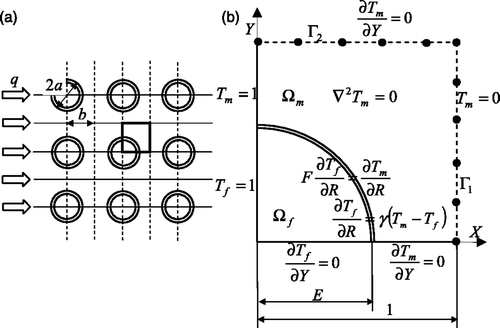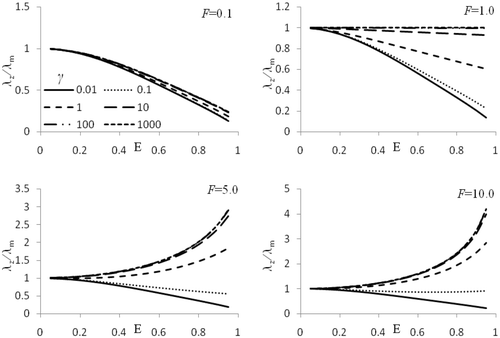Figures & data
Figure 1. A unidirectional reinforced fibrous composite with fibre arrangement according to a square array for the imperfect thermal contact between fibre and matrix: (a) general view, (b) formulation of a nondimensional boundary value problem in a repeated element.

Figure 2. The effective thermal conductivity as a function of radius of fibres in the matrix for different values of the ratio of thermal conductivity fibres to the matrix, F, and for different values of resistance number, γ.
